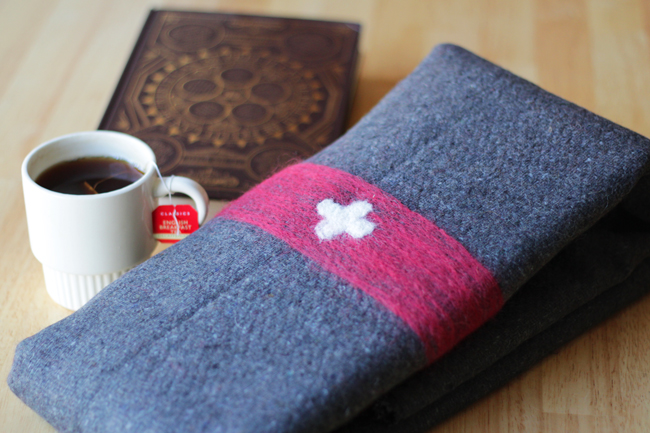
Today’s project is a toasty wool blanket – perfect for the uber cold weather we’ve been having in Chicago. This blanket is definitely stylish, but its real beauty lies in a few factors: 1) It’s easy to make. 2) You can do most of this project with the blanket on your lap, keeping you warm. 3) This is a DIY that will run you around $30, and the authentic blankets that inspired this project cost up to $300, depending on where you get them.
If you’re not convinced to do this project yet, I’m not sure we can be friends. No really, if you’ve literally never done a craft, you can do this project. I’m not kidding.
Supplies
a wool army surplus blanket (Mine was $4 at the Fleet Farm in my hometown.)
ruler/tape measure
a few pins or chalk
red & white roving – $10-15
needle felting mat – $10-20
needle felting tool – ~$15
Directions
Unwrap/unroll your wool blanket. It has to be wool for it to really look like a Swiss Army blanket. Also, it has to be wool for the needle felting to work. PS: Needle felting is the name of the crafting technique used for this project.
My sweet $4 blanket is wool blended with some artificial material that reeked of gasoline when it came out of the package. I didn’t let mine air out and wound up with a headache from the smell, so I recommend giving it 24 hours to detox before starting the project. My blanket doesn’t smell at all after a couple weeks out of the package.
To start, lay your blanket out on a clean floor. My blanket is about 60 by 80 inches, so I had to move some furniture to have enough space. Using a ruler and chalk or pins, make a line all the way down your blanket on its shortest side. Your line can be wherever you want, but if you’re going for accuracy, it should be relatively near the edge of the blanket, probably 12 or 16 inches from the edge. I’ve seen several variations in stripe style on Swiss Army blankets, so I honestly just picked a number and went with it. Once your first line is pinned or chalked, make another line parallel to it. Again, you can arbitrarily pick a width. The width I personally went with was 4 inches. So if your first line was 16 inches from the edge of the blanket, your second line should be 20 total inches from that same edge. Let me know by dropping a comment if you get stuck or want help picking measurements – I’m happy to help!
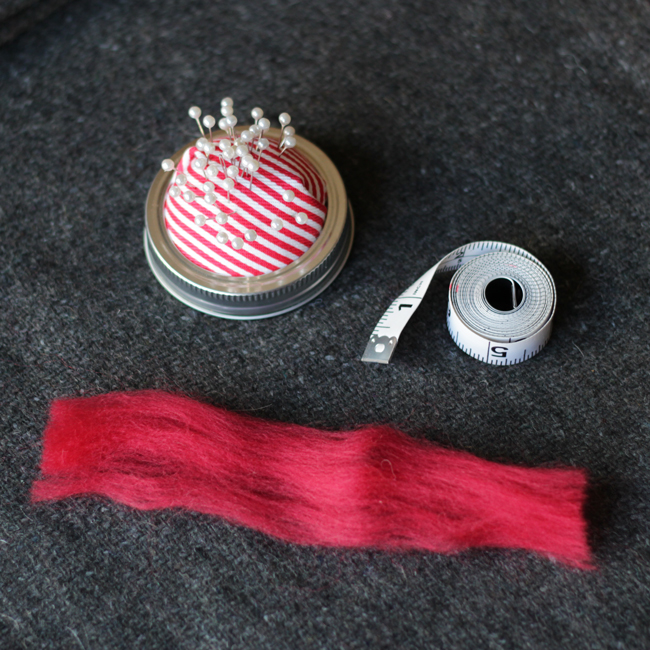
Next, unfold your red roving and separate it into long pieces. Lay your roving out on your blanket, spreading it so its evenly laid out between your pins or chalk markings, as shown.
Note that the pictures in this tutorial are just a swatch to demonstrate how the whole needle felting process works. In actuality, you’ll have a long strip of roving all the way down your blanket. If your roving isn’t as long as your blanket is wide, never fear! I’ll show you how to blend more roving in to cover any patches or add length. It’s easy, I promise.
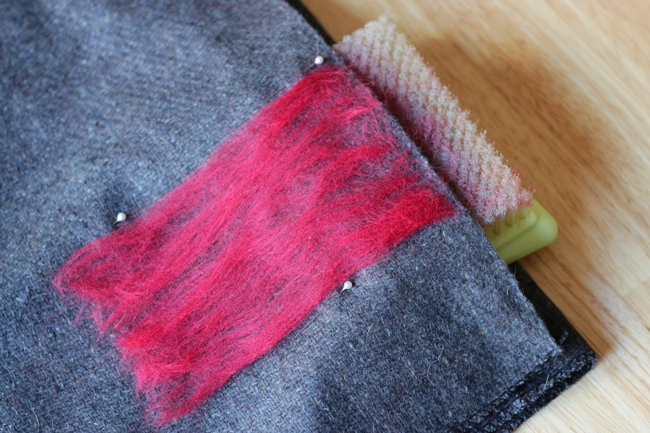
An intro to your needle felting tools
Since this might be your first needle felting project, here’s how a needle felting tool works. Most are spring-powered and come with a plastic safety guard and a lock. Needle felting needles are super sharp and have little barbs on them to help force the roving into the wool you’re working on (or into itself if that’s the kind of project you’re doing – see my beginning needle felting tutorial for an example of another way to needle felt). Follow the package directions for how to unlock, lock and clean your specific needle felting tool.
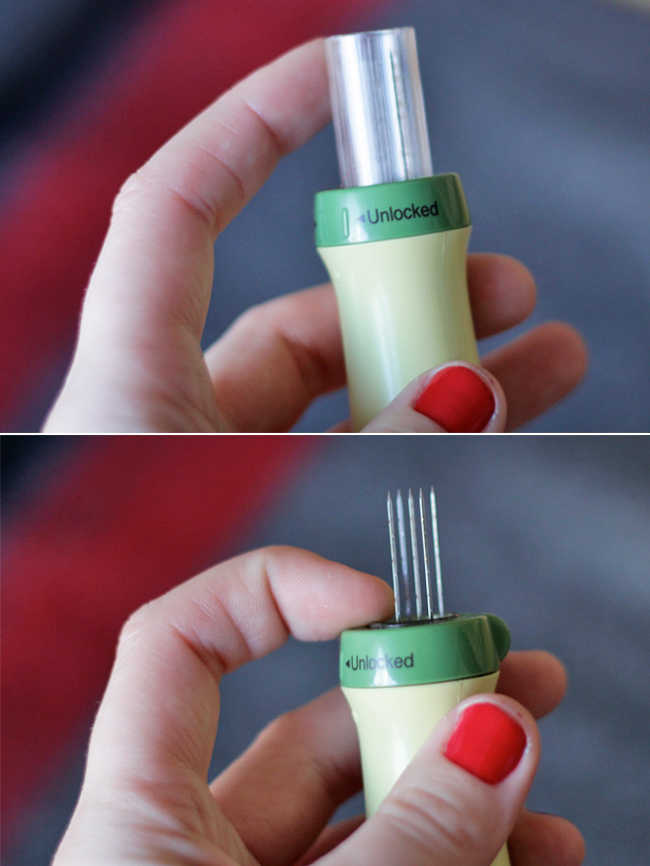
You can also check out this video from Clover, the company whose needle felting tools I own. The video is great because it shows you just what needle felting looks like in action.
Back to the project.
Once your roving is laid out and you’ve mastered your needle felting tool, grab your needle felting mat. Place it under your wool blanket, grab your needle felting tool, and start stabbing! Just stab all over that red stripe, all the way up and down, side to side until the roving is throughly blended into the blanket.
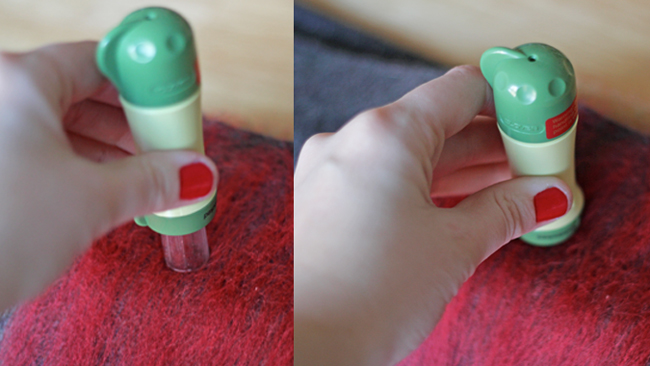
After your first pass stabbing the roving into the blanket, it’ll be secure enough that you can hunker down with a movie and your needle felting mat & tool and stab away right on your lap. Just please remember to keep that mat between the blanket and your lap. For real, those needles are effing sharp!
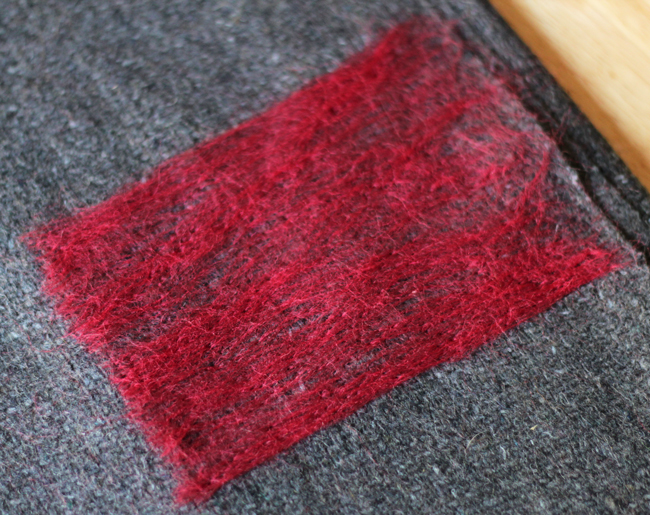
You’ll be stabbing (needling is the proper term for what you’re doing) for awhile if your blanket is large like mine. If you think you’re done, do a few more passes all the way up and down your blanket, just to make sure everything is well needled. The picture above is an example of what it will look like when you’re in good shape.
Dealing with thin patches & adding more length to your stripe
Notice my little patches where the grey blanket peeps through? Cut or tear yourself some teensy pieces of roving from your stash and thin them out a lot. Set them on top of where you’d like to thicken your stripe, put your mat underneath, and needle (stab) them into place.
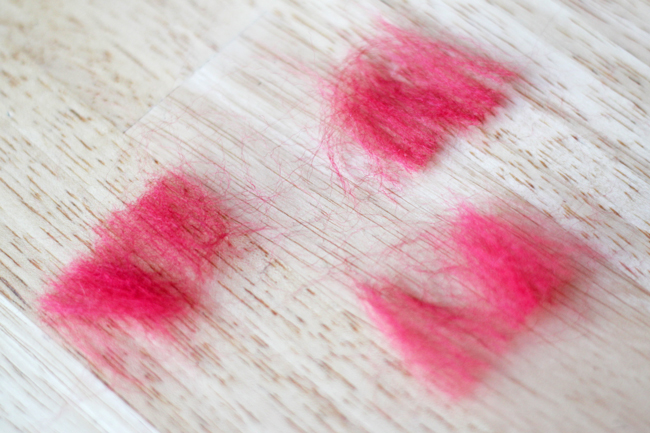
The fun thing about working with wool is that it’s basically like velcro – it wants to stick to itself. It also likes to blend. To add more length to your stripe, just plop down another strip of the roving like you did to begin with, overlap the new roving with the existing, and needle it until it looks like one continuous piece.
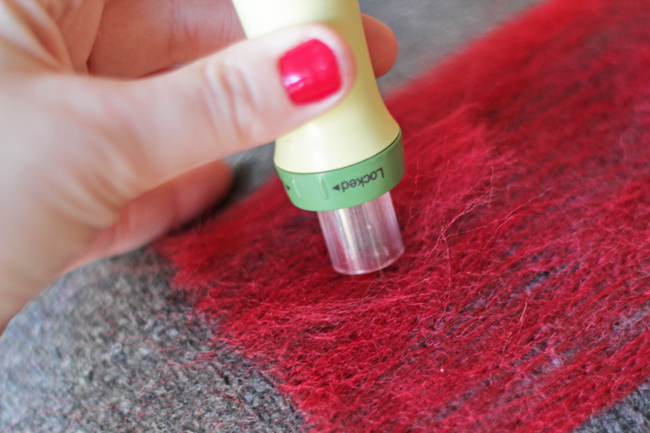
Adding the cross
When your red stripe is all set, it’s time to add the white Swiss cross to complete the blanket, yay! Grab a little bit of white roving, pulling to thin it out, and then fold it into a little cotton ball shape. The size of the cross is, again, up to you – just like the width of the stripe. Place it in the exact center of your blanket (you’ll have to measure this for yourself), and needle it onto the red stripe with your tool & mat.
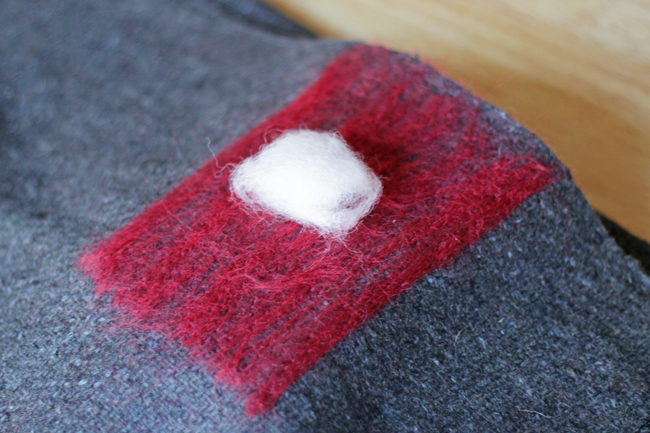
If it’s getting a little less cross-shaped, just stab it into submission. I really like doing what’s pictured below when I freehand applique shapes on to fabric with my needle felting tool. I kinda scoop pieces of roving that are sticking out wrong with the plastic safety cover of my tool, and stab them in. This works really well for me.
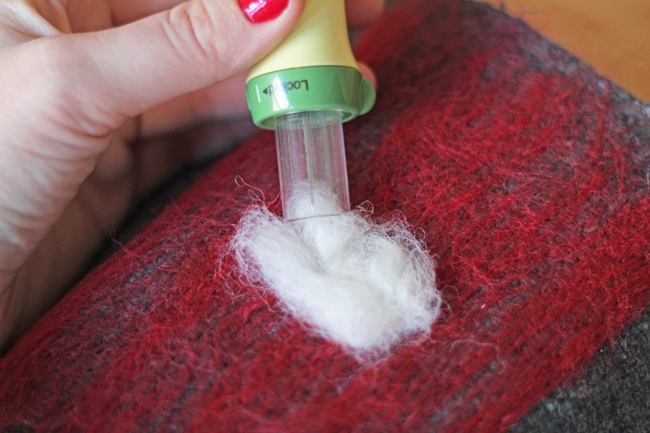
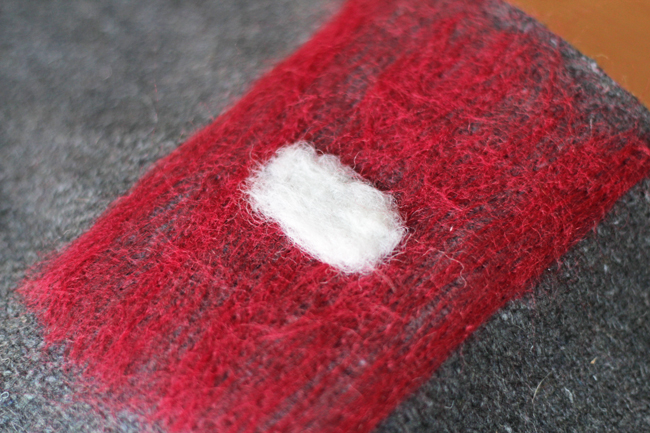
After your cross has its first stripe, it needs wings. Create an even smaller roll of white roving and pull on it so it has a thin tail as shown. Needle the thin tail onto the center of the cross, and the thick part onto the red stripe. You can patch in more white roving to help with the shape of the cross or use the scooping technique to shape it too.
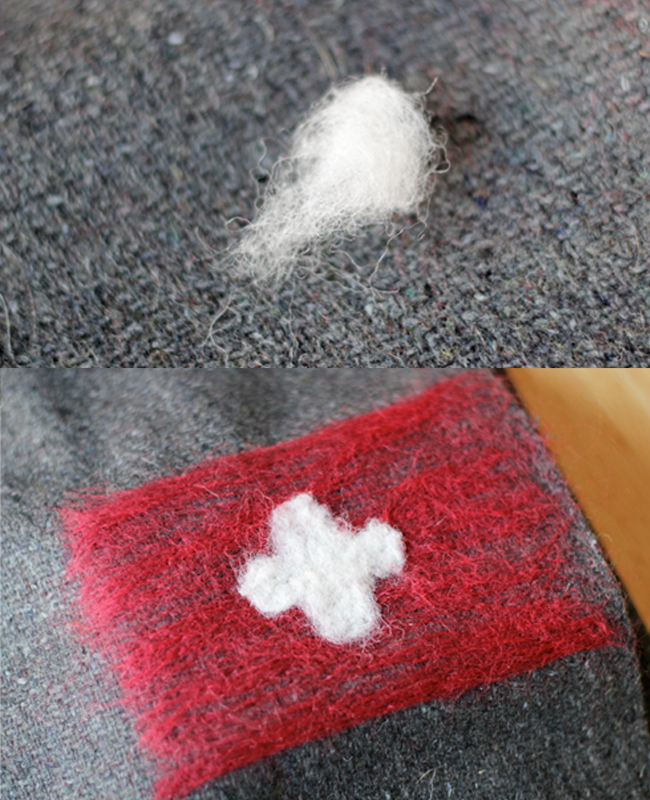 Ta da! You’re now a needle felting wizard. Also, you just saved yourself at least a hundo on a throw for your apartment.
Ta da! You’re now a needle felting wizard. Also, you just saved yourself at least a hundo on a throw for your apartment.
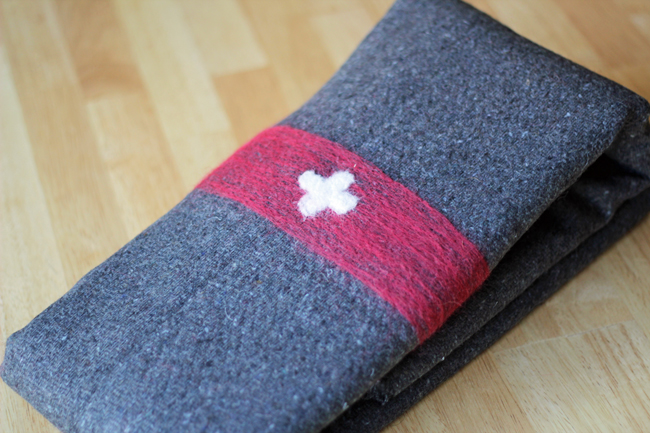
I wasn’t compensated for this project by any of the companies I linked to. I just linked to some supplies I know are available at my local craft stores.
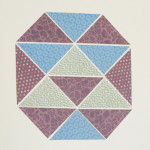





 & shop new patterns
& shop new patterns 





Leave a Reply